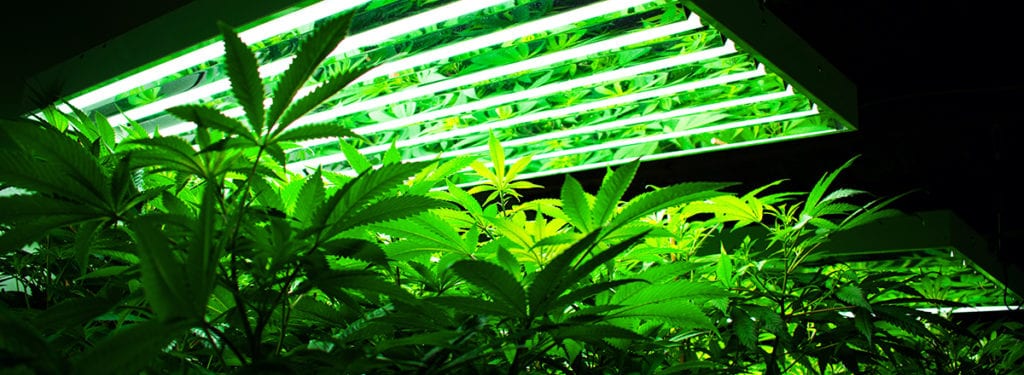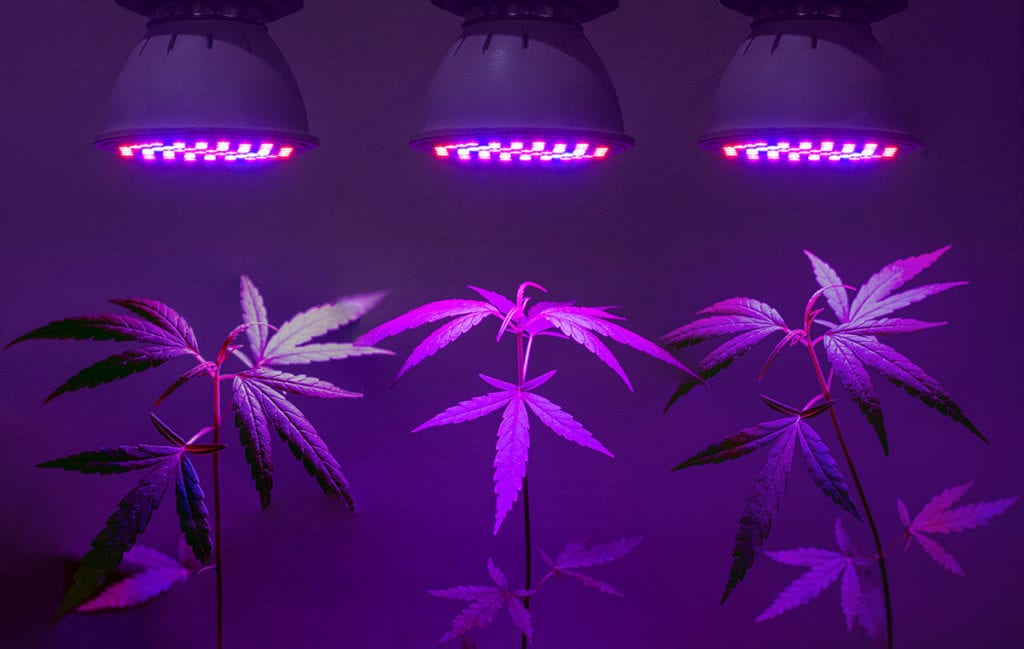Learn How To Grow Your Own Medical Cannabis In Illinois
In Illinois, medical marijuana cardholders can grow their own medicine at home. There are many benefits associated with growing your own medical marijuana, from cost savings to quality control. But, there are also some strict legal guidelines you must follow as well as some tips to bring out your inner green thumb.
This post will go over everything you need to know about how to grow cannabis for medicinal use in Illinois.
Illinois Home Grow Laws
So, who can grow medical cannabis in Illinois? Not just anybody! Though the Land of Lincoln has legalized both recreational and medical marijuana, the only people that can cultivate their own weed are medical marijuana patients. If you are not at least 21 years old and don’t possess a medical marijuana card, you cannot cultivate your own cannabis at home.
There are also limits to how many plants you can possess. Under Illinois law, medical marijuana patients can cultivate up to five cannabis plates at one time that are at least five inches tall.
There are also some laws for where you can grow your cannabis plants. Under state law, marijuana plants must be grown in locked, enclosed spaces that the public cannot see. In a nutshell, people passing by your home should not be able to tell you are growing cannabis. Additionally, minors cannot have access to the area you are growing marijuana. If you don’t legally own the property where you live, you will have to obtain permission from the owner before you can start growing cannabis.
Why You Should Consider Home
Growing Medical Marijuana
As we mentioned, there are a number of benefits associated with growing your own medical marijuana, including:
Cost Savings: After you buy the initial startup equipment, the money you would have spent at the dispensary will now go back into your pocket. For example, an ounce of cannabis from a dispensary costs between $100-$400. An ounce grown at home when you factor in seed, water, and electricity will cost just $60.
Quality Control: Another significant advantage of growing medical cannabis at home is the quality control factor. When you purchase weed from a dispensary and certainly a dealer, there’s no way of really knowing what’s inside— from pesticides, fertilizers, and even other harmful substances. Growing your own cannabis provides you with total control and peace of mind knowing exactly what the cannabis has touched.

- Convenience: Many medical marijuana patients are immobile and/or very ill. That means running to the dispensary to get their medicine can be extremely challenging and exhausting. When you grow your own cannabis, you don’t have to leave the comfort and safety of your home to get your medicinal marijuana
Things to Consider Before Beginning
Your Home Grow Journey
-

Medical Cannabis plants in flowering stage in a Grow tent under LED growlights.
When you have your medical marijuana card in hand and you are ready to start growing your own cannabis, it’s important to take a second and remember that cannabis cultivation isn’t a walk in the park. Growing marijuana is nothing like growing basil in your windowsill— though we sure wish it was that easy. You have to remember that growing cannabis requires a lot of knowledge. Here’s what to keep in mind:
- You must grow your plants in a space that has enough room for your plants to thrive and that allows you room to examine them when needed.
- Cannabis is quite finicky, and you will need to adjust the lighting and humidity for every stage of growth.
- Your cannabis plants require 40-60% humidity.
- You must grow your plants in an area that is at least 70-85 degrees when the lights are on and 58-70 degrees when the lights are off
- Make sure your grow location has an adequate supply of power and ventilation.
Cannabis Grow Lights
There are three popular options for lighting your indoor grow.
HID (high-intensity discharge) Lights
These are the industry standard and are widely used because of their efficiency, output, and value. In addition to bulbs, you will also need a ballast and hood/reflector for each HID light. Some of the benefits of HID lights include:
- They are the most efficient grow light (produces the highest yields/watt).
- HID lights are easy to use and don’t need to be constantly adjusted.
The cons of HID lights include:
- They get very hot and generate a lot of heat. This concentrated heat production means you will need to put the bulb in a hood and provide a form of cooling to prevent the excessive heat from beaming down onto the plants and causing the temperature to spike in your cannabis grow room.
- There are more parts and setup required with HID lighting. HID setups include at least one bulb, fixture, external ballast, and extra cable in addition to the exhaust system parts.
Fluorescent Grow Lights

The pros of fluorescent lights include:
- Low price.
- Don’t use a lot of electricity or produce much heat.
- Excellent light spectrum for growing cannabis.
- Lights can safely be kept a few inches from plants, making them a good choice for short spaces.
Some of the downfalls of fluorescent lights include:
- They get smaller yields per watt than other grow lights if used in the flowering stage. Fluorescents lead to about 0.25 grams of buds for every watt of electricity. But LEDs can get 2-4 times that.
Not powerful enough to support tall plants in the flowering stage.
LED Grow Lights
-

Plant sapling cannabis growing in pot with LED grow light
Light-emitting diode (LED) bulbs are costly, but they last longer and use far less electricity. Here are their benefits:
- LEDs commonly come with built-in cooling to push the heat up and away from plants. This leads to LEDs running very cool, allowing growers to not have to worry about venting heat.
- Smaller LEDs can be plugged right into the wall and hung over the plant without the need for anything else — plugin and begin growing!
Cons of LED grow lights include:
- LED grow lights need a lot of room between the lamp and the plants. This means that for best results, you need a tall grow space.
- LEDs get slightly smaller yields per watt than HPS bulbs. LEDs typically yield about 0.5/watt.
Water for Cannabis Grow
The most important thing to remember when it comes to watering cannabis plants is not to over-water them. This is because cannabis plants are extremely susceptible to fungal root diseases that occur when conditions are too wet.
To see if a cannabis plant needs water, stick your finger down a couple of inches into the soil. If it feels dry, it’s time for some H20. A plant that is under-watered will appear droopy and weak with yellow or brown leaves.
How much water a cannabis plant needs depends on a few factors, including:
- Size
- Overall health
- Outside temperature
- Stage of growth
On average, marijuana plants require one gallon of water daily per pound of expected flower.
Container Size for Growing Cannabis Indoors
Container size is another important factor in ensuring the cannabis plant receives the proper amount of water. If a container is too large, the plant’s roots can’t drink water where they can’t reach. When the roots stop absorbing water, it sits in the soil and takes a long time to evaporate. This can promote root rot and harbor insects and fungus. On the other hand, if a container is too small, the roots won’t have room to stretch out, which will stunt the plant’s growth.

Ideally, your plant should start in a small pot and progress to pots that are larger and larger as they outgrow each container.
What Is Flushing?
Flushing is another key part of the cannabis growing process. It’s when you stop giving your cannabis plant nutrients and only give it water. This is primarily done to flush out any nutrients that have built up in the plant over the course of its life. This is done a week or so before the plant is chopped down for harvest.
Flushing can also be done to clear cannabis plants that have a nutrient imbalance. The process can help regain the ability to absorb new nutrients.
You can also flush clear plants that have nutrient imbalances for a fresh start and allow them to resume absorbing nutrients.
Nutrients
-

Male farmer watering Bush green marijuana. Cannabis plantation in sunlight.
Marijuana plants also need secondary nutrients, including magnesium and sulfur.
Depending on their growth stage, marijuana plants will need different amounts of nutrients. In general, you should fertilize your marijuana plants at least once per week. You should aim for a pH balance in your marijuana soil between 6.0 and 6.8.
Cannabis fertilizer contains essential plant nutrients that help growers raise healthy marijuana crops with abundant leaf growth and flowers. Without fertilizer, the buds on the cannabis plant might not reach their full potential for growth.
There are a few stringent requirements you must meet to be approved for a medical marijuana card in Illinois, including:
- Fill out an official application with the Illinois Department of Public Health.
- Be at least 18 years old (minors need consent from their legal guardian and two physician recommendations).
- Be a legal Illinois resident with proof of residency.
- Receive a diagnosis for a qualifying medical condition from a licensed physician and receive a certification to prove it.
The good news is Compassionate Clinics of America is here for you. From making sure you have the appropriate paperwork to submit with your medical marijuana card application to finding a physician to diagnose you with a qualifying condition, we are here for you every step of the way.
We have a team of physicians who are licensed and in good standing with their medical boards. They also hold the necessary state certifications to certify patients for medical cannabis cards. We also work closely with our grow partners at Higher Harvest and Aroma Grow to provide you with all of the home grow services and tools you need to launch a successful home grow operation, from seed to harvest. Higher Harvest offers complete grow packages with setup and consulting available
We have also partnered with Origo Labs to provide Cannabinoid, Terpene, and potency testing because responsibly consuming cannabis begins with knowing exactly what you’re putting in your body. The best way to figure that out is with lab analysis to help you take the guesswork out of dosing and enjoy the purity of every strain you consume.
Compassionate Clinics of America can also help you secure the tools your cannabis plants need to thrive. Contact us today to get started on getting your medical marijuana card and developing your curated home grow kit. We look forward to hearing from you!
Frequently Asked Questions
What are the legal guidelines for growing medical cannabis at home in Illinois?
In Illinois, only medical marijuana cardholders at least 21 years old can cultivate their own cannabis at home. They are allowed to grow up to five cannabis plants at a time that are at least five inches tall. The cannabis plants must be grown in a locked, enclosed space that the public cannot see, and minors should not have access to the growing area. If the grower does not own the property, permission from the owner is required.
What are the benefits of growing medical cannabis at home?
Growing your own medical cannabis provides a range of benefits, including cost savings, quality control, and convenience. For example, the cost of home-grown cannabis, when you consider seed, water, and electricity costs, is significantly lower than the cost at a dispensary. You can also control the quality of your cannabis, ensuring it’s free from pesticides, fertilizers, or harmful substances. Moreover, for immobile or very ill patients, growing cannabis at home offers the convenience of not traveling to a dispensary.
What should I consider when growing my own medical cannabis in Illinois?
Growing your own medical cannabis requires a certain level of knowledge and preparation. You need to ensure that your growing space is big enough for your plants to thrive and that you can adjust the lighting and humidity for each growth stage. Your plants need 40-60% humidity and a temperature of 70-85 degrees when the lights are on and 58-70 degrees when the lights are off. Adequate power supply and ventilation are also crucial for your grow location. Other considerations include choosing the right grow lights, managing water for your plants, deciding the right container size, and understanding the process of flushing and nutrients your plants need.
























